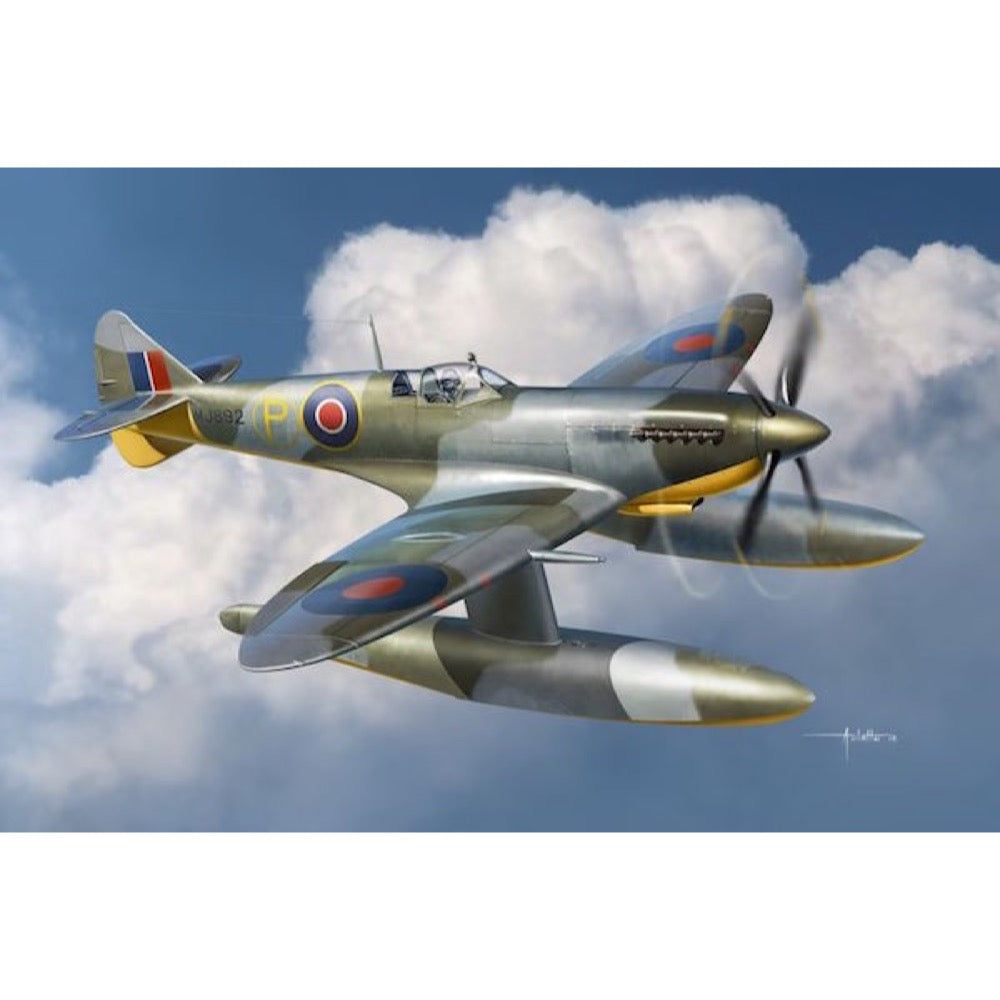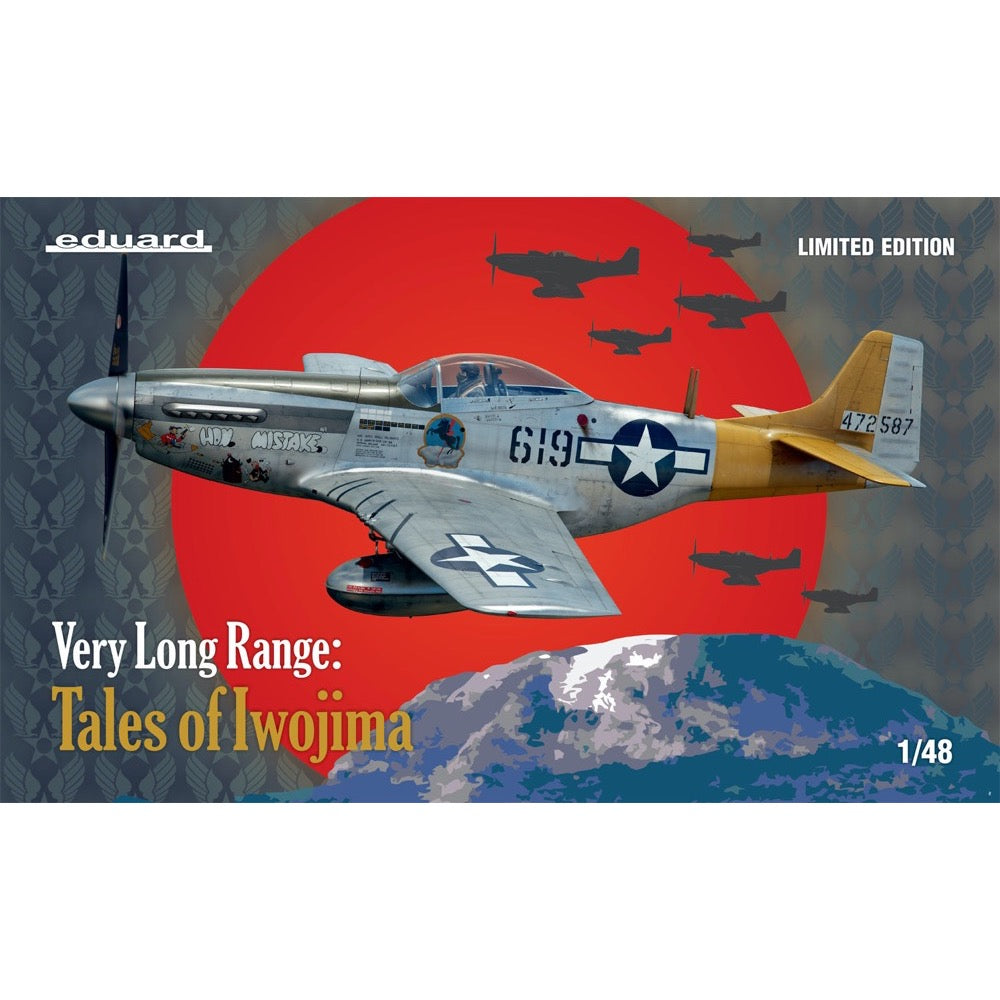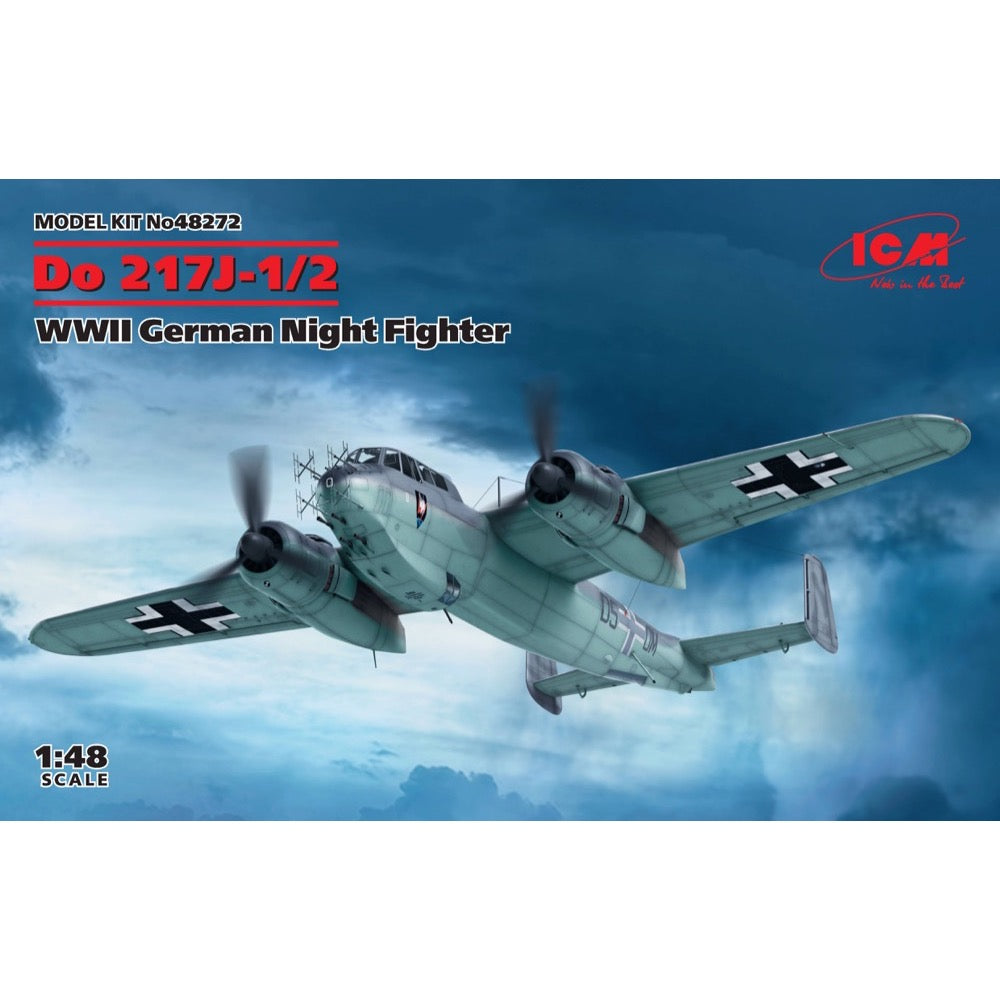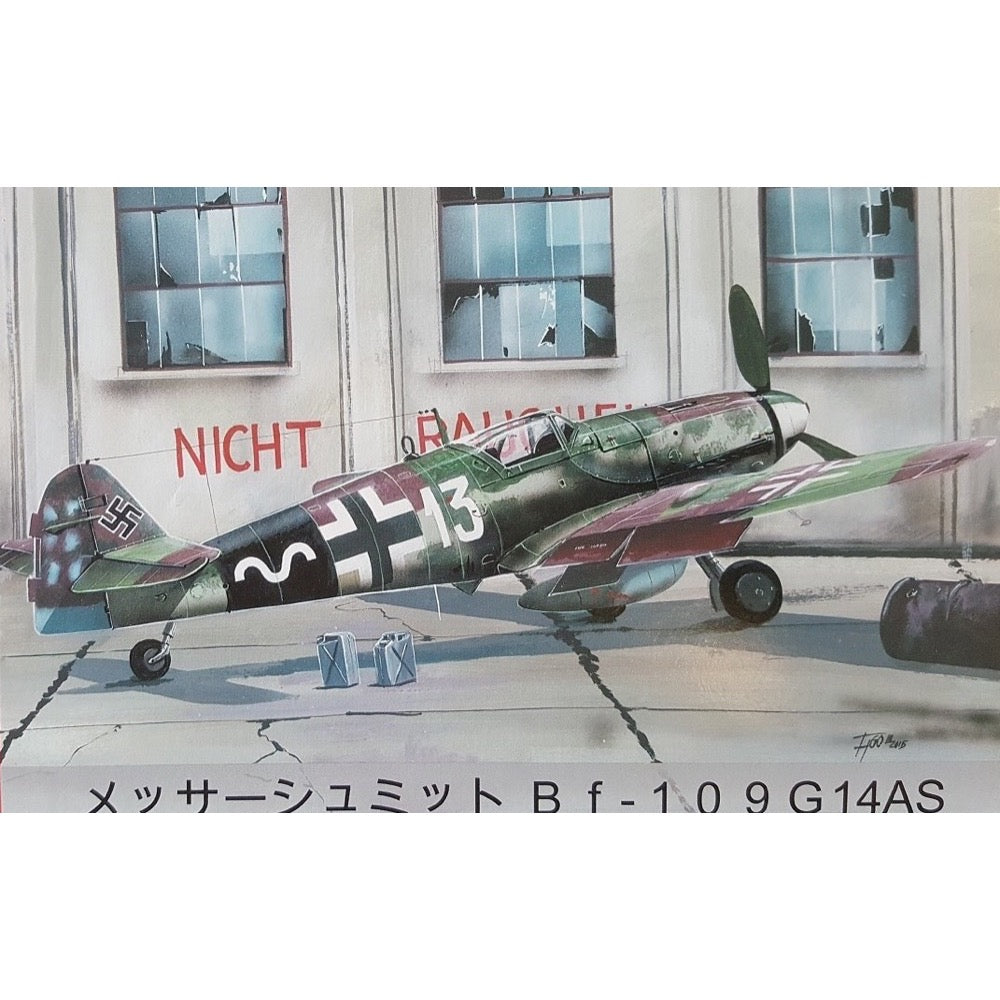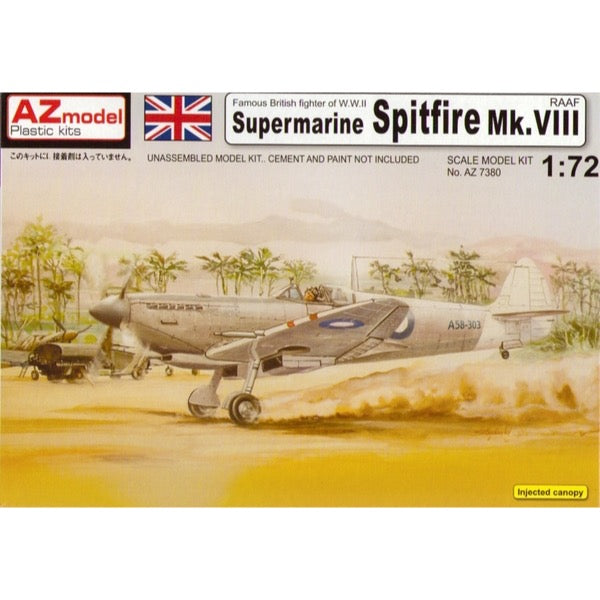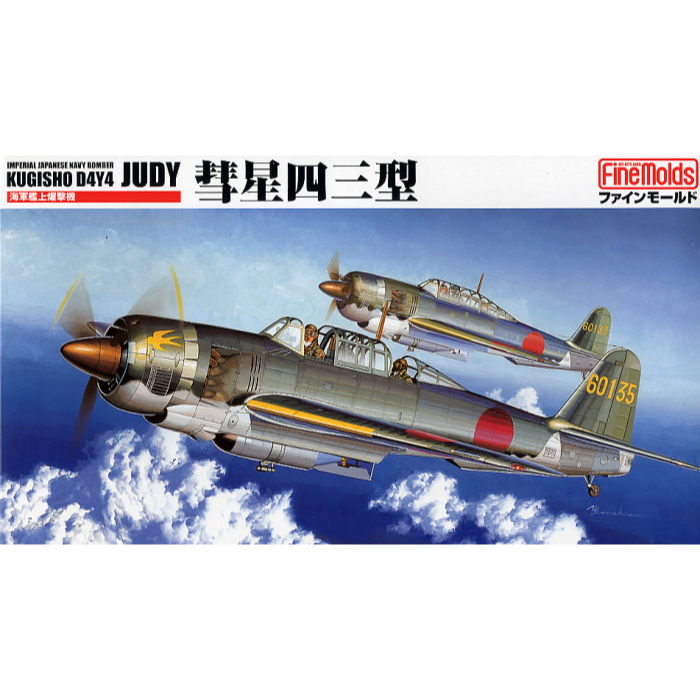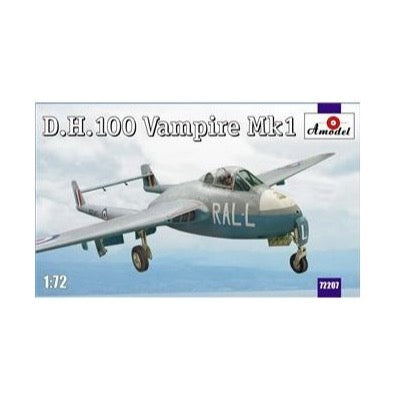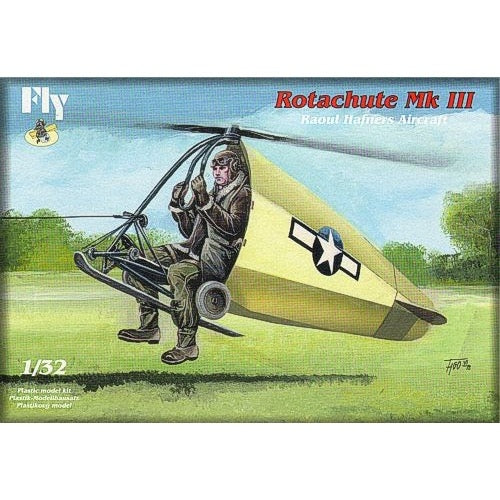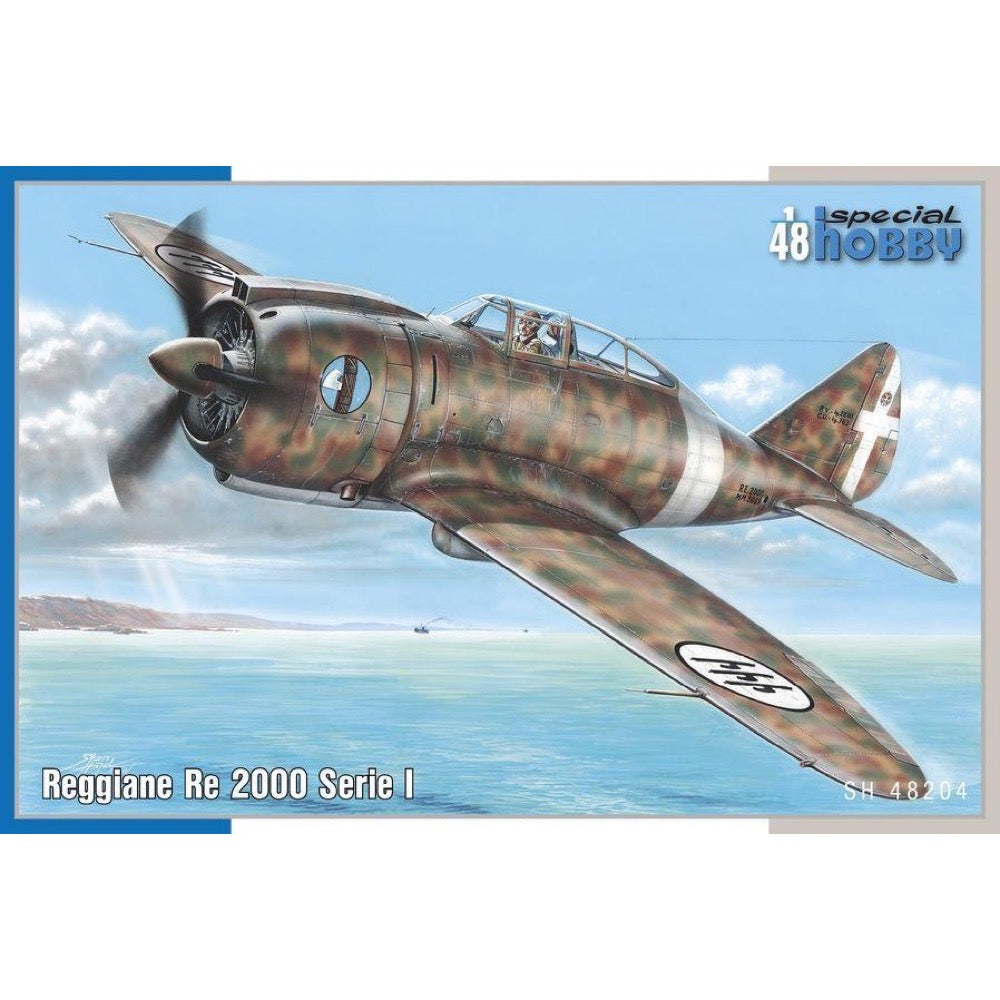
Special Hobby 48204 1/48 Reggiane Re 2000 Serie I
24.00
$
<p>Just before the outbreak of WW2, the Reggiane Re 2000 took part in the competition for the standard fighter which was to serve with the Italian air force. Even though the type offered quite high performance, it eventually did not win, so the most of the production was offered for export. The Regia Aeronautica, however, decided to give the type a try and deployed it mainly in the dangerous operations against Malta.</p>
<h3>Features</h3>
<ul>
<li>
<p>The model kit contains four styrene sprues and one with clear parts.</p>
</li>
<li>
<p>The wing sprue has its origins in the Classic Airframes kit while all the other components are brand new, the small ones being produced from metal moulds.</p>
</li>
<li>
<p>Three eye-catching marking options bearing the Italian mottle camouflage pattern</p>
</li>
</ul>
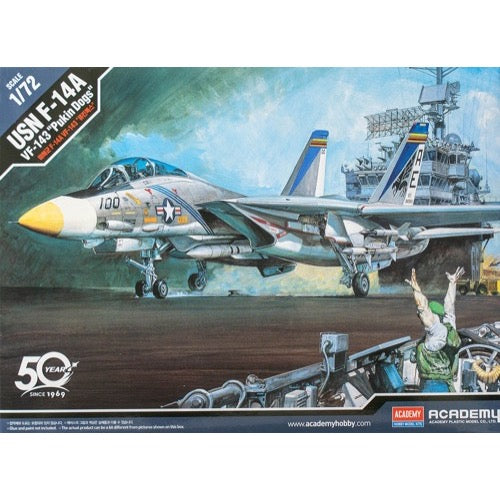
Academy 12563 1/72 Grumman F-14A VF-143 Pukin Dogs
29.00
$
<p>Designed as the U.S. Navy's primary fighter, the F-14 Tomcat could perform air superiority, escort, and strike missions and was undoubtedly one of the most sophisticated and technologically advanced aircraft ever to serve an aircraft carrier. The prototype machine was flown on December 21, 1970, and the first planes were delivered to the US Navy four years later. The last Tomcat planes were decommissioned only in 2006, which perfectly illustrates the high quality and great performance of this machine. The most innovative and characteristic solution for the F-14 are the wings with variable geometry. Controlled by computer or manually by the pilot, they can change their angle of attack from 20 degrees at minimum speed to 60 degrees at supersonic speeds. The changing geometry of the wings also allows for optimal positioning of the wings when maneuvering tightly, thanks to which this powerful aircraft exhibits amazing maneuverability. The heart of the Tomcat weapon system is the Hughes ANG-9 radar, usually cooperating with the AIM-54A Phoenix air-to-air missiles with a range of up to 180 km. Being able to track and attack more than one target is especially important. No less important element of the armament, as shown by the combat experience in the Vietnam War, is the cannon - in the F-14 mounted inside the M-61 Vulcan hull, firing up to 6,000 rounds per minute! Of course, you can also attach other types of weapons to the Tomcat, such as Sparrow, Sidewinder rockets or various bombs. The F-14 also owes a lot of its success to the excellent power unit in the form of a pair of Pratt-Whitney TF30 engines with a thrust of 9300 daN with afterburning. Technical data: Maximum speed: 2480 km / h, climb speed: 153 m / s, practical ceiling 17100 m, maximum range: 3200 km, armament: fixed - single, six-barrel 20mm M61-A1 cannon, suspended - up to 6580 kg cargo.</p>
<p>This is an injection-plastic jet aircraft model kit.</p>
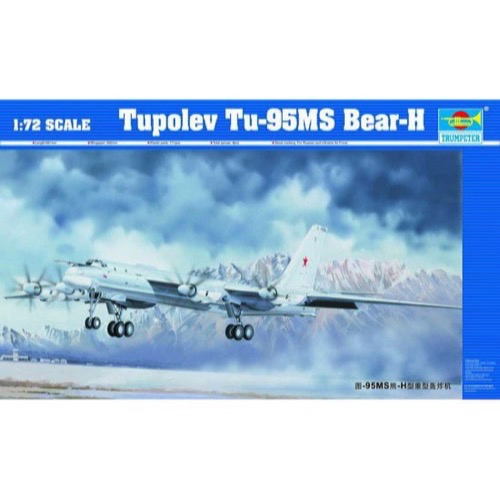
Trumpeter 01601 1/72 Tupolev Tu-95MS Bear-H
60.00
$
<p>After carrying out successful tests, the first of which was launched in September 1979 after which series production started in 1981. With the reopening of the BEAR production line, the Soviets began producing a new, upgraded variant of the BEAR turboprop bomber, there by increasing their long-range bomber force. This entirely new variant of the BEAR bomber-the BEAR H – became the launch platform for the long-range Kh-55 [AS-15] air-launched cruise missile. The initial version carried Kh-55 air-to-surface missiles located on a catapultin in the bomb bay. </p><p></p>
<br>
<p>This was the first new production of a strike version of the BEAR airframe since the 1960s, thereby reversing a decline in use of Bear aircraft through the 1970s. By 1988 BEAR H bombers were regularly seen training in simulating attacks against North America. The development of Tu-95MS aircraft can trace back to the Tu-142 yet differs in a number of details from the Tu-95. The nose of the Tu-95MS is similar to that of the Bear-C and Bear-G, but with a deeper, shorter radome, cable ducts running back along both sides of the fuselage.</p><p></p>
<br>
<p>It lacks the 178-cm forward fuselage plug of the maritime Tu-142, and retains the shorter fin and horizontal, undrooped refueling probe of previous bomber variants. The rear gun turret is a new design, with a single twin-barrelled GSh-23L cannon in place of the pair of single-barrel NR-23s carried on earlier models. </p><p></p>


